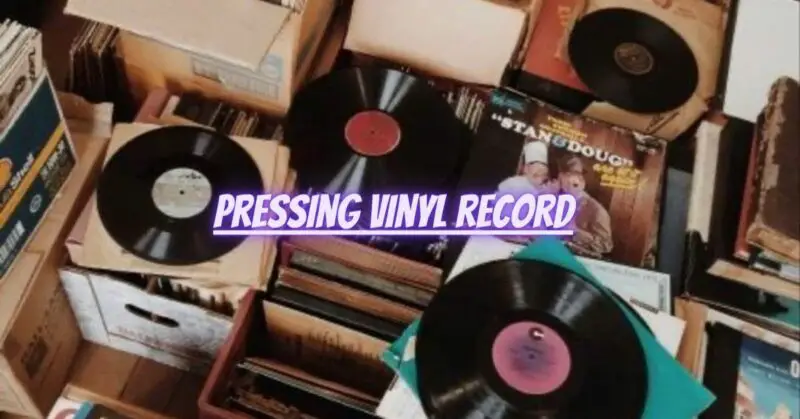In an age where digital music dominates the landscape, vinyl records have reemerged as a beloved format among audiophiles and music enthusiasts. The process of pressing vinyl records is a fascinating blend of artistry and engineering. In this article, we will explore the intricate steps involved in pressing vinyl records and shed light on the craftsmanship that goes into creating these timeless musical artifacts.
The Vinyl Pressing Process: Vinyl record pressing involves several key steps that transform audio recordings into physical records ready for playback. Let’s delve into each stage of the process:
- Mastering: The first step is mastering, where the audio engineer prepares the final mix specifically for vinyl. This process involves adjusting the levels, equalization, and dynamics to optimize the sound for the vinyl medium. The engineer creates a master lacquer, a metal disc coated in a layer of lacquer, which serves as the template for the vinyl pressing.
- Plating: The master lacquer is carefully treated to create a metal negative called the stamper. This stamper is then used to produce multiple positive copies, known as mothers and stampers. The stampers have the inverse groove information, ready to be pressed onto the vinyl records.
- Vinyl Preparation: Vinyl pellets are melted and formed into a puck-shaped “biscuit.” This biscuit is placed between the two stampers, and high pressure is applied to create the characteristic grooves in the vinyl. The heat and pressure meld the vinyl into the desired shape and lock the audio information within the grooves.
- Labels and Sleeves: During the pressing process, labels are added to the center of the vinyl record. These labels typically contain information about the artist, album title, and tracklisting. Additionally, paper or cardboard sleeves are created to protect the vinyl record, often featuring artwork or additional information.
- Quality Control: Before the records are packaged and distributed, they undergo a rigorous quality control process. This includes visually inspecting each record for any defects, checking for audio imperfections, and conducting playback tests to ensure optimal sound quality.
The Art of Vinyl Pressing: While the pressing process has a scientific aspect to it, there is also an artistic element involved. Pressing vinyl records requires skill and attention to detail. Factors such as the temperature, pressure, and duration of the pressing can influence the final sound quality. Experienced technicians monitor and adjust these variables to achieve the best possible results, striving for balanced sound, minimal surface noise, and overall fidelity.
Preserving the Vinyl Tradition: The resurgence of vinyl records has led to the emergence of pressing plants around the world, both new and established. These plants play a vital role in keeping the vinyl tradition alive and catering to the growing demand for this analog format. Each pressing plant has its unique setup, equipment, and techniques, contributing to the distinct characteristics of vinyl records from different sources.
Conclusion: Pressing vinyl records is an intricate process that combines technical expertise with artistic sensibility. From the meticulous mastering stage to the precise vinyl pressing and quality control, each step contributes to the creation of a tangible piece of musical art. The resurgence of vinyl records demonstrates the enduring appeal of the format, as enthusiasts seek the warmth, depth, and physical connection that vinyl provides. So, next time you hold a vinyl record in your hands, appreciate the craftsmanship and dedication that went into pressing that grooved disc, ready to deliver the magic of music to your turntable.


